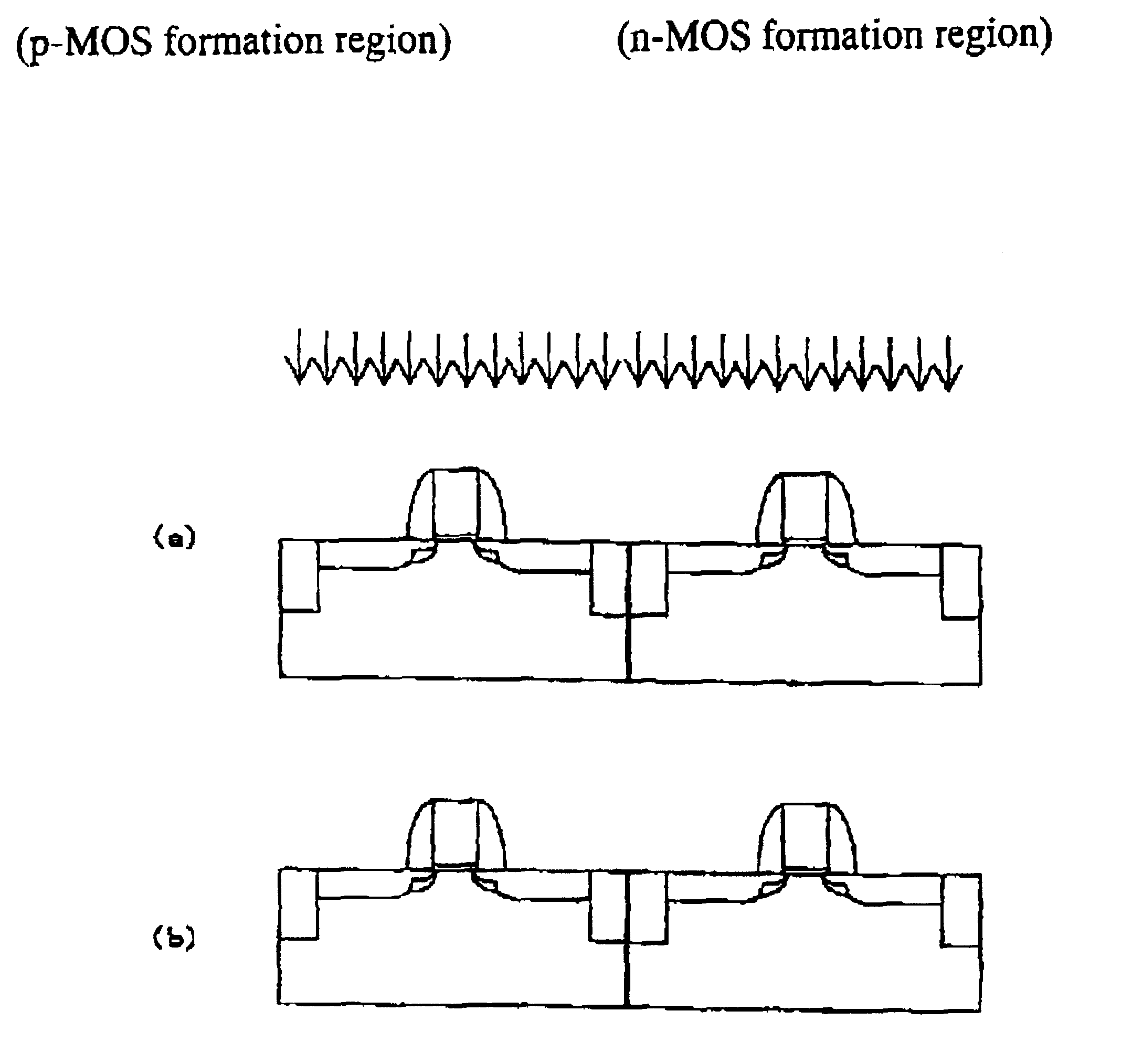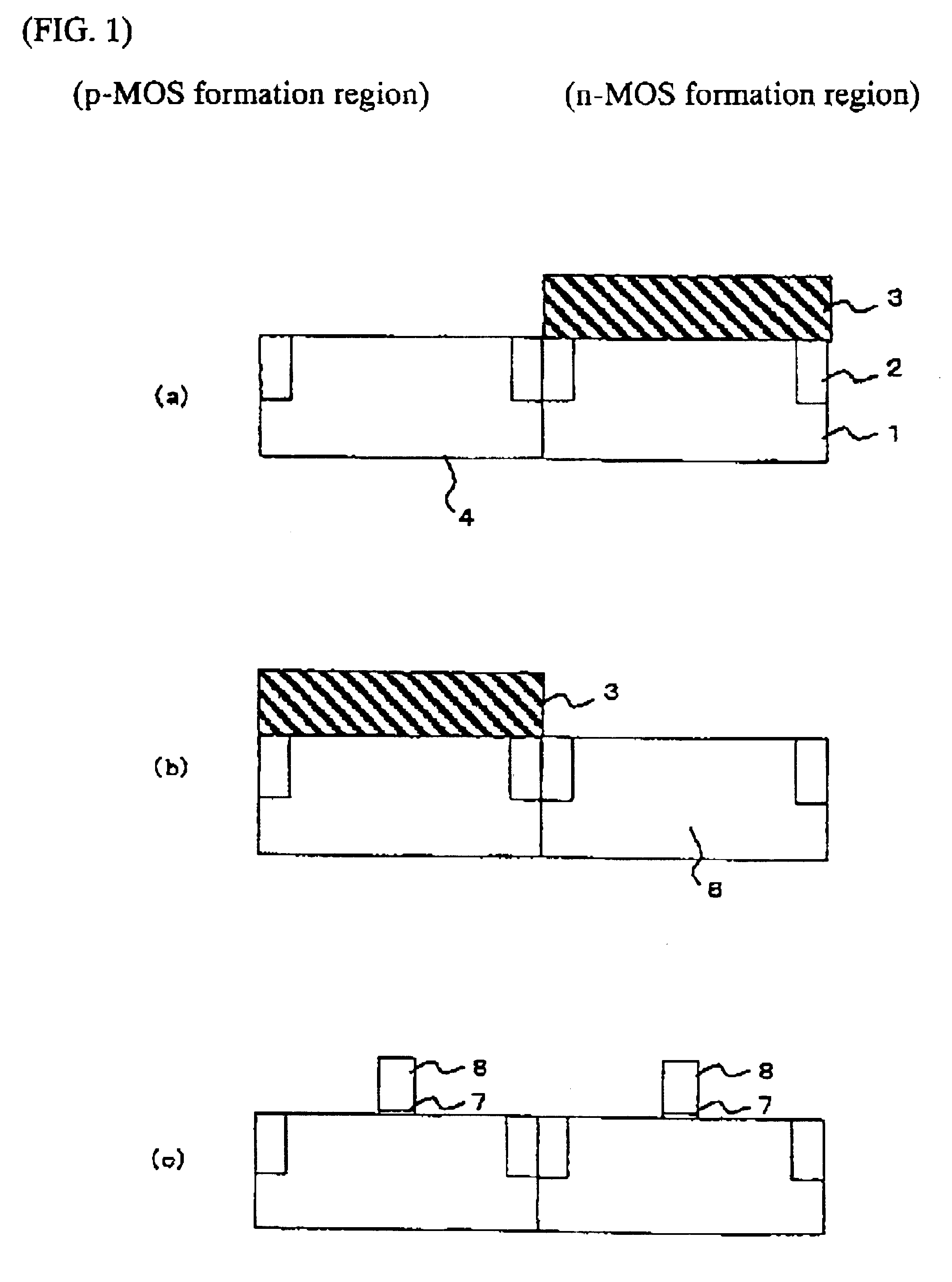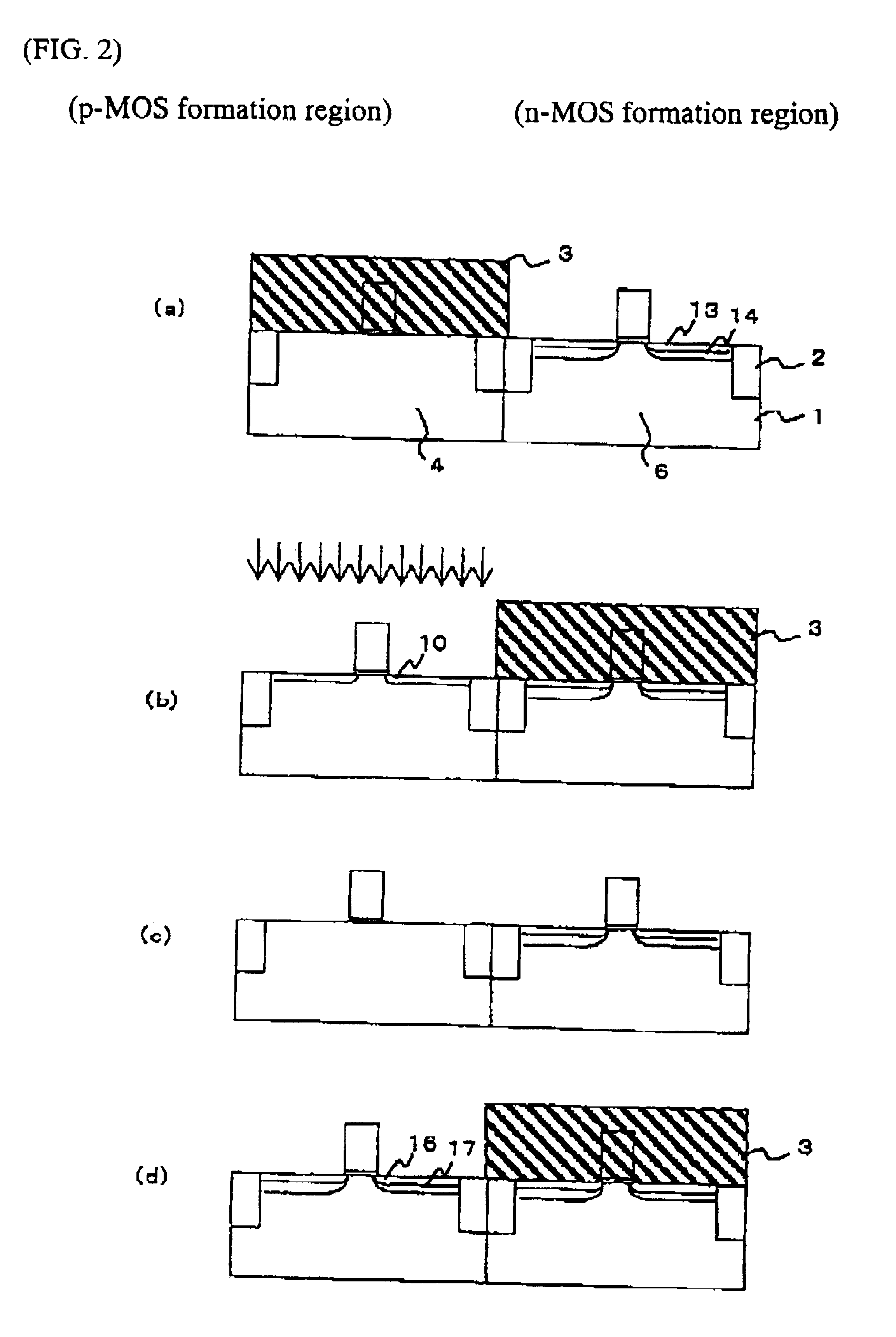Method of forming MOS transistor
a transistor and mos technology, applied in the field of forming mos transistors, can solve problems such as harmful effects, variable problems, and transistors that do not perform normal operations
- Summary
- Abstract
- Description
- Claims
- Application Information
AI Technical Summary
Benefits of technology
Problems solved by technology
Method used
Image
Examples
embodiment 1
The present embodiment is to apply the present invention to the CMOS fabrication processes. The description will be made with reference to FIGS. 1-4. The heat treatment temperature mentioned below is the temperature hen measuring the substrate temperature by a non-contact measurement for example pyrometer.
As shown in FIG. 1(a), a shallow trench isolation 2 is formed over a silicon substrate 1. A photo-resist 3 is provided on an n-MOS formation region for carrying out an ion-implantation of phosphorus into a p-MOS formation region, thereby forming an n-well 4. The photo-resist 3 remains and an ion-implantation of As is carried out for adjusting a threshold voltage. The conditions for the ion-implantation is that the acceleration voltage is 100 keV and the dose is 6.times.10.sup.12 cm.sup.-2.
As shown in FIG. 1(b), a photo-resist 3 is provided on the p-MOS formation region for carrying out an ion-implantation of boron into the n-MOS formation region to form a p-well region 6. The photo...
embodiment 2
This embodiment is to show an example for applying the present invention to the CMOS fabrication process through the similar processes to the example 1. In example 1, the ion-implantation of fluorine for improvement in the slow trap is carried out to only the p-MOS formation region at the acceleration voltage of 15 keV and the dose of 1.times.10.sup.14 m.sup.-2. In this embodiment, immediately after the gate patterning process FIG. 1(c), the ion-implantation of fluorine is carried out under the acceleration voltage of 15 keV and the dose of 3.times.10.sup.15 m.sub.-2. In example 1, the ion-implantation of arsenic for forming the source and drain of the n-MOS (FIG. 3(c)) is carried out at the acceleration voltage of 30 keV and the dose of 6.times.10.sup.15 m.sup.-2. In this embodiment, the ion-implantation of fluorine is carried out under the acceleration voltage of 50 keV and the dose of 1.times.10.sup.15 m.sup.-2.
example 3
This embodiment is to show an example for applying the present invention to the CMOS fabrication process through the similar processes to the example 1. In example 1, the ion-implantation of fluorine for improvement in the slow trap is carried out to only the p-MOS formation region at the acceleration voltage of 15 keV and the dose of 1.times.10.sup.14 m.sup.-2. In this embodiment, immediately after the gate patterning process FIG. 1(c), the ion-implantation of fluorine is carried out under the acceleration voltage of 15 keV and the dose of 3.times.10.sup.15 m.sup.-2.
PUM
 Login to View More
Login to View More Abstract
Description
Claims
Application Information
 Login to View More
Login to View More - R&D
- Intellectual Property
- Life Sciences
- Materials
- Tech Scout
- Unparalleled Data Quality
- Higher Quality Content
- 60% Fewer Hallucinations
Browse by: Latest US Patents, China's latest patents, Technical Efficacy Thesaurus, Application Domain, Technology Topic, Popular Technical Reports.
© 2025 PatSnap. All rights reserved.Legal|Privacy policy|Modern Slavery Act Transparency Statement|Sitemap|About US| Contact US: help@patsnap.com



